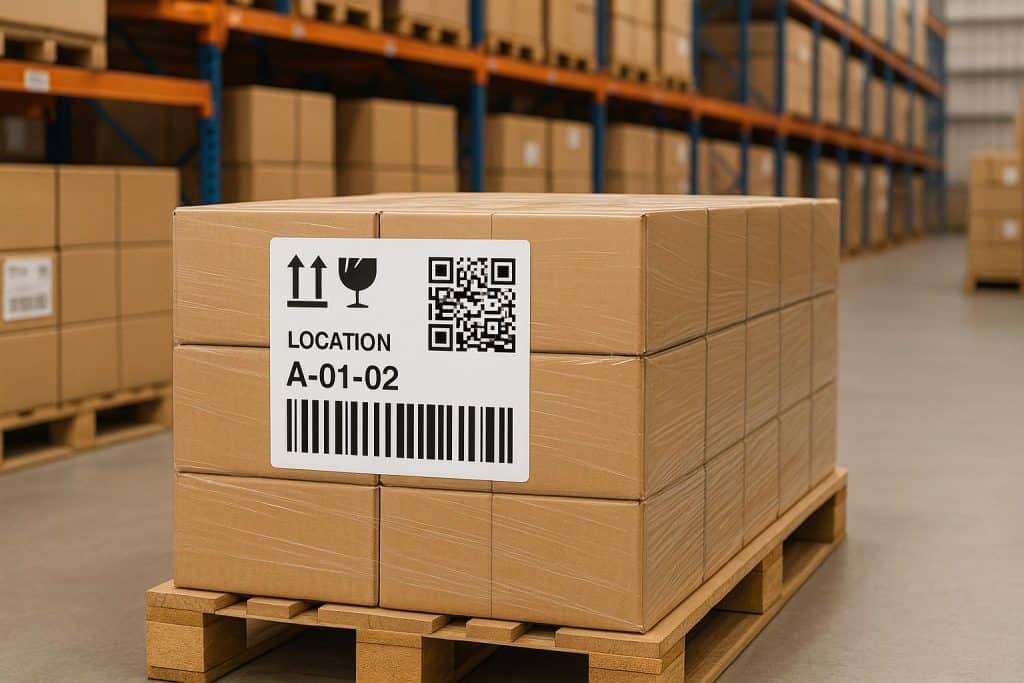In the intricate world of modern supply chains and logistics, efficient inventory management and seamless warehouse operations are pivotal to business success. A critical component in achieving these objectives is pallet labelling . Pallet labels play an indispensable role in enhancing warehouse efficiency by providing vital information that ensures products are stored, tracked, and managed correctly. In this article, we delve into the various ways pallet labels contribute to optimising inventory and maintaining a well-organised warehouse environment.
The Basics of Pallet Labelling
Pallet labels are markers affixed to pallets, which contain critical information such as product details, quantity, barcodes, and handling instructions. By providing a clear and concise method of identifying and categorising inventory, these labels make it easier for warehouse personnel to retrieve, store, and manage items efficiently. Barcodes, in particular, have revolutionised the way inventory is handled, allowing for quick scanning and automatic data entry into inventory management systems.
Streamlining Inventory Management
One of the primary benefits of pallet labels is their ability to streamline inventory management. By enabling real-time tracking of goods, pallet labels facilitate accurate record-keeping and help prevent stock discrepancies. By scanning a label, warehouse operators can instantly update inventory levels, monitor stock movement, and ensure that records are always up to date. This real-time accuracy reduces the likelihood of overstocking or stockouts, helping businesses to optimise their inventory levels and reduce carrying costs.
Enhancing Warehouse Operations
Pallet labelling is integral to enhancing the overall efficiency of warehouse operations. Labels provide clear identification of contents, preventing the misplacement of goods and reducing the time spent searching for specific items. With easily identifiable labels, warehouse employees can quickly locate and retrieve items, enhancing picking efficiency and reducing errors. Moreover, pallet labels can include special instructions, such as “fragile” or “keep upright”, ensuring that goods are handled properly, thereby minimising damages.
Facilitating Efficient Communication
Effective communication is crucial in a bustling warehouse environment, and pallet labels contribute significantly to this process. By providing clear and concise information, labels reduce the need for verbal instructions, which can often be misinterpreted. The use of universally recognised symbols and barcodes ensures that all employees, regardless of language or literacy level, understand the necessary handling instructions, fostering a more inclusive and efficient workplace.
Supporting Automation and Technology Integration
As warehouses increasingly adopt automation technologies, pallet labels act as an interface between physical goods and digital management systems. Barcoded labels can be scanned by automated equipment such as robotic arms and autonomous vehicles, facilitating seamless integration into automated systems. This integration enhances productivity and operational efficiency, allowing warehouses to process higher volumes of inventory with greater speed and accuracy.
Conclusion
In conclusion, pallet labels are a fundamental tool in improving inventory management and warehouse efficiency. By ensuring accurate, real-time tracking of goods, reducing errors, and facilitating effective communication, these labels play a vital role in modern supply chain operations. As technology continues to advance, the role of pallet labels will only become more indispensable, supporting automation and future-proofing warehouse operations. For businesses aiming to enhance their logistics processes, investing in efficient pallet labelling systems is a crucial step towards achieving operational excellence.
